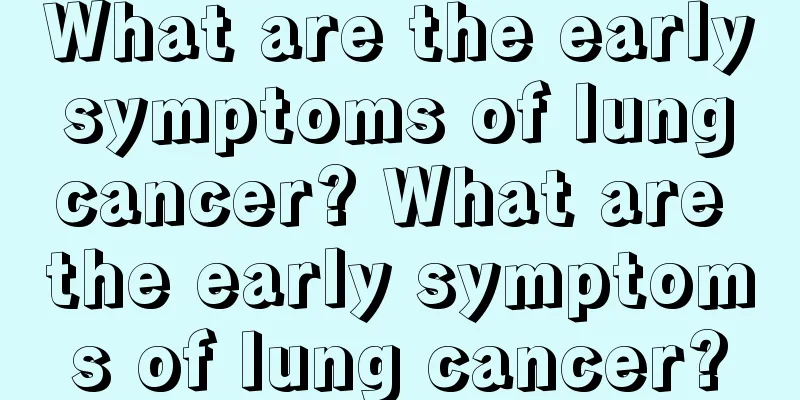Five treatment principles for shock

|
Shock is a relatively scary phenomenon. When the body is affected by many factors, it will lead to insufficient blood circulation and oxygen in the body, resulting in shock. Although shock is not a disease, when shock occurs, the patient must be rescued in time. When in shock, the body's functions will temporarily stop working. If the rescue is not timely, it will have a certain impact on the patient's health. 1. Capacity expansion. One of the characteristics of shock is insufficient circulating blood volume, so the core of treating shock is to replenish blood volume in a timely manner. During the volume expansion process, two veins need to be selected, one vein to ensure the need for volume expansion, and the other vein to ensure that the drug can be delivered into the body in a timely manner. 2. Treat the primary disease promptly. The main cause of shock is due to a certain disease in the body. Therefore, when relieving the symptoms of shock, you must first cure the disease that caused the shock, so as to ensure that the shock can be completely cured. 3. Correct the imbalance of acid-base balance. When shock occurs, many abnormal problems will occur in the body. Certain tissues in the body will produce a large amount of acidic substances. Too much acidic substances in the body will lead to poisoning. A healthy body maintains a state of acid-base balance, so it is necessary to correct the acid-base imbalance in the body in time. 4. Use vasoactive substances. Shock can be divided into many types, such as anaphylactic shock, neurological shock, etc. Different types of shock have different treatments, but vasoactive substances can treat different types of shock. Pressor drugs and vasodilators can be used during shock. 5. Eliminate the cause of shock as soon as possible. The treatment of diseases is targeted at the symptoms, so finding the primary cause of the disease is the most effective treatment method. Different treatment plans should be selected according to different causes. There are many reasons for shock, so everyone must find the cause of shock as soon as possible. Symptoms of shock 1. Early stage of shock When the primary symptoms and signs are predominant, there are signs of mild excitement, such as clear consciousness but irritability, anxiety, mental tension, pale complexion and skin, mild cyanosis of the lips and nail beds, accelerated heart rate, increased respiratory rate, cold sweat, weak and rapid pulse, blood pressure may drop suddenly, or drop slightly, or even be normal or slightly high, weak pulse pressure, and decreased urine volume. 2. Mid-stage shock The patient is irritable, unconscious, has shallow breathing, decreased limb temperature, low and dull heart sounds, a thin and weak pulse, and a progressive decrease in blood pressure that may be below 50 mmHg or unmeasurable. The pulse pressure is less than 20 mmHg. The skin is cold and clammy, and the urine is scanty or anemic. 3. Late stage of shock Manifestations include DIC and multiple organ failure. (1) DIC manifestations Refractory hypotension, skin cyanosis or extensive bleeding, nail bed microcirculatory congestion, and poor efficacy of vasoactive drugs often coexist with organ failure. (2) Symptoms of acute respiratory failure Symptoms include progressive dyspnea that is difficult to correct with oxygen inhalation, progressive hypoxemia, tachypnea, cyanosis, pulmonary edema and decreased lung compliance. (3) Symptoms of acute heart failure Rapid breathing, cyanosis, increased heart rate, dull heart sounds, and may have gallop rhythm and arrhythmia. If a patient experiences a slow heart rate, a sallow complexion, and cold extremities, these are also signs of heart failure. The central venous pressure and pulmonary artery wedge pressure will increase, and in severe cases, pulmonary edema may occur. (4) Symptoms of acute renal failure Oliguria or anuria, azotemia, hyperkalemia and other water, electrolyte and acid-base balance disorders. (5) Other manifestations The degree of consciousness disturbance reflects the blood supply to the brain. Liver failure may cause jaundice and increased blood bilirubin. However, since the liver has a strong compensatory function, the incidence of hepatic encephalopathy is not high. Gastrointestinal dysfunction is often manifested by abdominal pain, indigestion, hematemesis and black stools. |
<<: What to do if the shoe velcro doesn't stick anymore
>>: Can washing your face with white sugar remove freckles?
Recommend
How many days after dyeing can you wash your hair? You must pay attention to these matters
For female friends, dyeing hair is a common thing...
Slimming yoga after meals
Eating is to replenish our bodies with nutrients,...
What should prostate cancer patients pay attention to? What are the symptoms of prostate cancer?
Prostate cancer is a urological disease. It refer...
"Leftover food" has nothing to do with "night"
The saying that "leftover vegetables cause c...
How to diagnose pituitary tumors
Pituitary tumors do not have any obvious symptoms...
What are the causes of fibroids
In this rapidly developing society, there are mor...
How to effectively eliminate puffy eye bags?
The swelling of eye bags bothers many people. If ...
Experts explain liver cancer examination liver function test
Liver function tests are essential when examining...
Can I take anti-inflammatory drugs if I have had gastric perforation?
Anti-inflammatory drugs belong to a type of antib...
Can early esophageal cancer be cured?
Can early esophageal cancer be cured? If esophage...
How to remove oil stains from clothes
Accidentally getting oil stains on clothes is one...
How much does it cost to treat stomach cancer?
How much does it cost to treat gastric cancer? Ga...
What is the reason for high glutamic transaminase
Glutathione aminotransferase is an important indi...
How do you know if you are loose down there
Many women worry about their lower body being loo...
Minimally invasive treatment for lumbar disc herniation
For diseases such as lumbar disc herniation, many...









